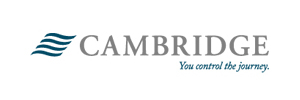Quote of the Week
“If you want to grow old as a pilot, you’ve got to knowwhen to push it and when to back off.” – Chuck Yeager
Technical Corner
U.S. stocks climbed to fresh record highs after the October jobs report showed that the economy added more jobs than expected despite the negative impact from the GM worker strike and the loss of temporary U.S. Census jobs. On the surface, this report tends to look good. But if you look under the hood, most of the jobs created were in the service sector and especially in the hospitality area, which are generally lower paying jobs. Manufacturing jobs that are higher paying continued to decline.
The Federal Reserve cut interest rates for the third time this year and signaled a pause in lowering rates to assess economic conditions. While economic growth has slowed, as the third quarter GDP estimate showed last week (from 2.0% to 1%), the forward looking GDP growth rate as estimated from the software we use is growth slowing to 1% growth in the fourth quarter. This is not good. We will know more in January of next year.
Our software has the economy moving into a period of stagflation in this quarter. This is signaled by growth continuing to slow and inflation increasing. This is a time to be cautious. Because inflation is increasing, we will be taking a position in energy soon. We will maintain our other positions as they tend to do well in this type of environment.
As the jobs report hinted that the economy is expanding, the economic picture was not all rosy. In fact, consumers looked like the only highlight, with business investments and exports subtracting from third quarter growth. In contrast to consumers, business sentiment has been notably downbeat, reflecting weakness in manufacturing.
Also released last week was the IHS Purchasing Managers’ index, a measure of sentiment in the manufacturing sector. It was softer than expected and continued to show signs of contraction in goods production. We see manufacturing as a key pocket of weakness with the tariffs being the primary cause. Just think about it; if you were a manufacturer, would you be planning on expanding production with the uncertainty of what Mr. Trump will do next? The “China Deal” isn’t going to solve the underlying problems of China stealing our technology or China hacking our corporations. All it will represent is China buying more soybeans and pork from U.S. farmers. The damage has already been done to world commerce.
Tom’s Thoughts
Death of a Family Member Checklist
This is not one of the cheeriest of subjects. Realistically, however, it is one that will confront all of us at some time. Accordingly, the following checklist (prepared by Broadridge Investor Communications Solutions, Inc.) may be helpful in attending to those matters that must be addressed when the time arises.
Some of the following tasks may have to be completed by the estate’s executor.
Initial tasks
- Upon the death of your loved one, call close family members, friends, and clergy first because you’ll need their emotional support.
- Arrange the funeral, burial or cremation, and memorial service. Hopefully, your loved one will have made arrangements ahead of time. Look among his or her papers for a letter of instruction containing final wishes. Such instructions may also be stated in his or her will or other estate planning documents. Arrange any cultural rituals, and make any anatomical gifts.
- Notify family and friends of the final arrangements.
- Alert your loved one’s place of work, union, and professional organizations, and any organizations where he or she may have volunteered.
- Contact your own employer and arrange for bereavement leave.
- Place an obituary in the local paper.
- Obtain certified copies of the death certificate. The family doctor or medical examiner should provide you with the death certificate within 24 hours of the death. The funeral home should complete the form and file it with the state. Get several certified copies (photocopies may not be accepted); you will need them when applying for benefits and settling the estate.
- Review your family member’s financial affairs, and look for estate planning documents, such as a will and trusts, and other relevant documents, such as deeds and titles. Also locate any marriage certificate, birth or adoption certificates of children, and military discharge papers, which you may need to apply for benefits. These documents may be found in a safe-deposit box, or your loved one’s attorney may have copies.
- Report the death to Social Security by calling 1-800-772-1213. If your loved one was receiving benefits via direct deposit, request that the bank return funds received for the month of death and thereafter to Social Security. Do not cash any Social Security checks received by mail. Return all checks to Social Security as soon as possible. Surviving spouses and other family members may be eligible for a $255 lump-sum death benefit and/or survivor benefits. Go to ssa.gov for more information.
- Make a list of assets. Put safeguards in place to protect any property. Make sure mortgage and insurance payments continue to be made while the estate is being settled.
- Arrange to retrieve your loved one’s belongings from his or her workplace. Collect any salary, vacation, or sick pay owed to your loved one, and be sure to ask about continuing health insurance coverage and potential survivor’s benefits for a spouse or children. Unions and professional organizations may also offer death benefits. If the death was work-related, the estate or beneficiaries may be entitled to worker’s compensation benefits.
- Contact past employers regarding pension plans, and contact any IRA custodians or trustees. Review designated beneficiaries and post-death distribution options.
- Locate insurance policies. The policies could include individual and group life insurance, mortgage insurance, auto credit life insurance, accidental death and dismemberment, credit card insurance, and annuities. Contact all insurance companies to file claims.
- Contact all credit card companies and let them know of the death. Cancel all cards unless you’re named on the account and wish to retain the card.
- Retitle jointly held assets, such as bank accounts, automobiles, stocks and bonds, and real estate.
- If your loved one owned, controlled, or was a principal in a business, check to see if there are any buy-sell agreements under which his or her interest must be sold.
Within 3 to 9 months after death
- File the will with the appropriate probate court. If real estate was owned out of state, file ancillary probate in that state also. If there is no will, contact the probate court for instructions, or contact a probate attorney for assistance.
- Notify creditors by mail and by placing a notice in the newspaper. Claims must be made within the statute of limitations, which varies from state to state (30 days from actual notice is common). Insist upon proof of all claims.
- A federal estate tax return may need to be filed within 9 months of death. State laws vary, but state estate tax and/or inheritance tax returns may also need to be filed. Federal and state income taxes are due for the year of death on the normal filing date, unless an extension is requested. If there are trusts, separate income tax returns may need to be filed. You may want to seek the advice of a tax professional.
Within 9 to 12 months after death
- Update your own estate plan if your loved one was a beneficiary or appointed as an agent, trustee, or guardian.
- Update beneficiary designations on your retirement plans, including IRAs, and transfer-on-death accounts on which the your loved one was named beneficiary.
- Reevaluate your budget, and short-term and long-term finances.
- Reevaluate your insurance needs, and update beneficiary designations on insurance policies on which your loved one was the named beneficiary.
- Reevaluate investment options.
If your loved one was a veteran, you may be eligible for burial and memorial benefits. Call 1-800-827-1000 to find the nearest VA regional office.
Duplicate copies of marriage and birth certificates are available at the county clerk’s office where the marriage and births occurred. Veterans and the next of kin of deceased veterans can submit an online request for separation documents and other service personnel records via eVetRecs, a service available through the National Archives at archives.gov.
If there is no one authorized to open your loved one’s safe-deposit box, petition the probate court for an order to open.
Do not be hasty when settling your loved one’s estate. Important decisions need to be made regarding distributions, which must be made in compliance with the will and applicable laws. Seek an experienced estate planning attorney for advice.
If your family member didn’t already make final arrangements or leave final instructions, go to www.funerals.org for some helpful information about funerals, burials, and memorial services.
How Lof Advisors can help
Many of the tasks on this checklist involve accessing important documents. Lof Advisors has implemented an electronic document vault service that is complimentary to clients and their families. The service allows us to securely store important client documents and to retrieve them when needed. To find out more give us a call at 520-881-2523.











